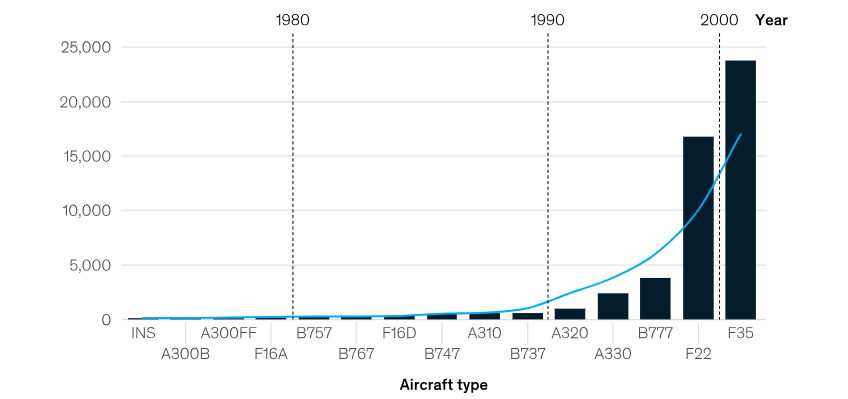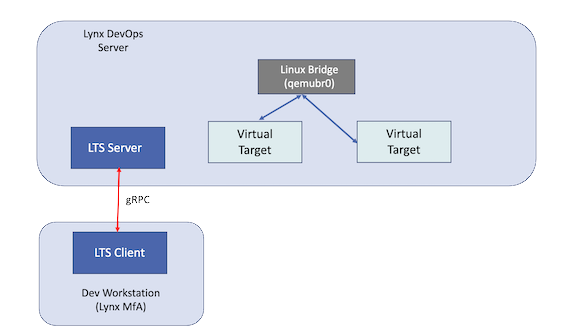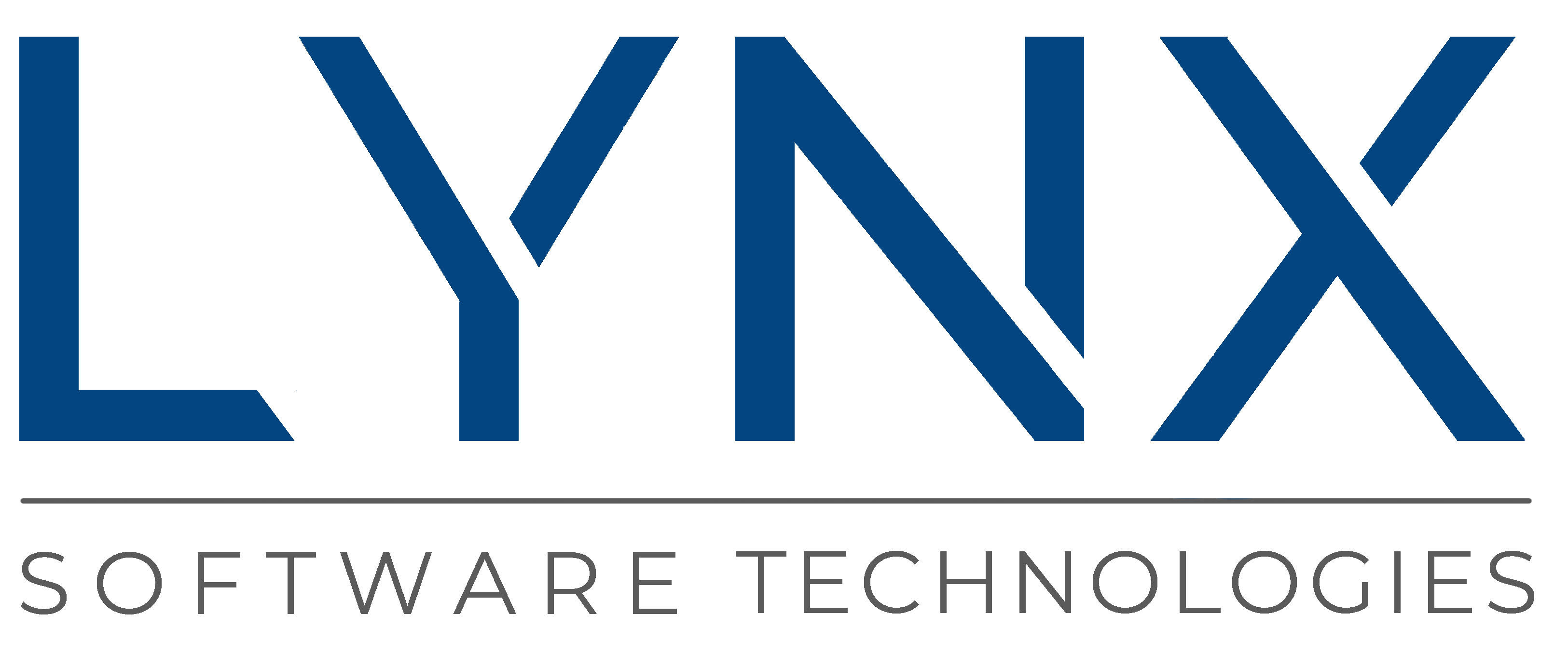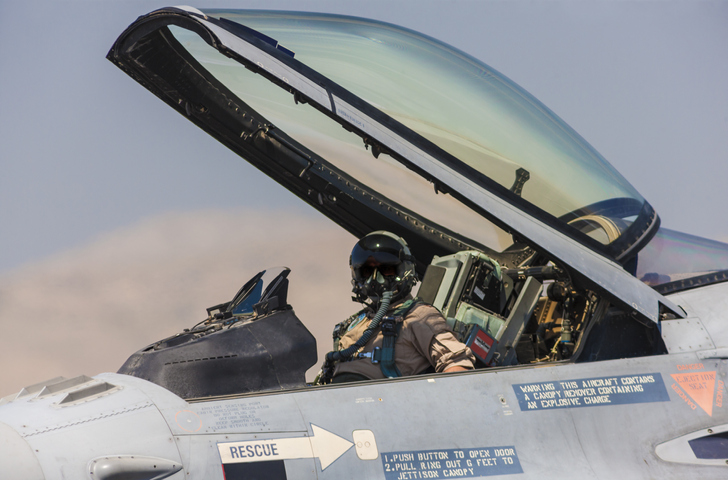Report after report showcases the challenges that the Military and Aerospace market sectors face when delivering programs on time on budget and with the committed level of functionality.
Growth of Software Complexity in Aerospace Systems - Thousand lines of source code

.png?width=1135&height=66&name=Screenshot%20(222).png)
Graph from McKinsey.
At the core of this is that embedded systems continue to become more complicated. A nice piece from McKinsey from 2022 covers a few industry examples. As we are now in a software-defined world, these challenges will continue to grow.
We strongly believe our focus should be increasingly centered on “integration”. If there is a compelling, complementary technology to what Lynx offers, we focus on proving that our customers can efficiently and effectively harness the 3rd party technology in a low-risk way. Some of this engagement with the industry will be through the Labs initiative we rolled out in 2CQ23. The “ic” in LYNX MOSA.ic stands for Integration Center. To be more specific, that includes:
- A hypervisor, LynxSecure, a ground-up design created after 9/11, focused on high reliability, strong isolation between virtual machines, and immutable allocation of resources to applications on a least privilege basis.
- LynxOS-178, a real-time operating system (RTOS) compatible with industry standards like ARINC, FACE, and POSIX
- LynxElement, the industry’s first Unikernel to be based on a safety-certified RTOS. This simplifies the path for customers to create applications and associated services and reuse those modules across programs.
- Support for rich operating systems from third parties, including Microsoft Windows(R) and various flavors of Linux, including RedHat and Canonical.
As we look at improvements to our LYNX MOSA.ic software framework, part of our DNA is how those new capabilities address this macro challenge.
One of the regular constraints faced by embedded software developers is the availability/accessibility of the target hardware. Certain functionalities, such as proving deterministic real-time responses, have to harness the hardware; a lot can be accomplished by harnessing powerful server hardware and virtual environments. Many of our customers, such as the Lockheed Martin F-35 program, use Linux and like the ease of migration presented by LynxOS-178 due to its strongest alignment to POSIX compatibility compared to the entire set of real-time operating system offerings in the industry. Code that needs to be certified and/or executed inside tight and predictable time windows is moved across to LynxOS-178.
We also see our customers explore more with CI/CD development strategies. Rather than forcing our customers to adopt new design flows, it is important that Lynx’s technologies can be incorporated into their flows.
In early July, Lynx released a package of software for evaluation by customers and partners that:
- Disaggregates LYNX MOSA.ic into a set of microservices
- Provides support for virtual environments as a first-class citizen as compared with physical hardware
- Enables customers to create software on servers for Linux and LynxOS-178
This release, which we call VIE (Virtual Integration Environment), eases the integration for a customer leveraging virtual environments.
For companies new to Lynx, this reduces the barrier to getting started with LYNX MOSA.ic since it removes the need to procure a physical board. For customers that have committed to using LYNX MOSA.ic, this new software enables customers to create a Cloud-based workflow (initially on-prem, we are committed to adding support for Azure later this year and will work with the market to determine what other options need to be provided). This SDK effectively enables the development and debugging of Linux and LynxOS-178 applications on QEMU for both Intel and Arm targets.
The diagram below shows how the system is envisioned to be configured. The Lynx DevOps Server hosts the Virtual Target Emulator. There is a Linux-hosted QEMU, and vSwitch supports the LYNX MOSA.ic RTOS or LynxElement (Unikernel) runtime environments. This provides accurate emulation of POSIX/ANSI calls.
Client/Server Lynx Target Services (LTS) utility allows users to create/delete and start/stop LynxOS-178 or Unikernel images. Lynx provides CLI and Python APIs to control this.

|
To use this package of software, customers would:
- Deploy the Lynx DevOps Server with the Virtual Target Emulator and Manager
- Deploy the client side of the Virtual Target Manager on the MfA CDK workstations
- Build LynxOS-178, Unikernel and Buildroot Linux images
- Use CLI to upload and run the images on the Virtual Target Emulator
- Script the deployment and execution of images on the virtual target for CI/CD
|
If you are interested, please fill out the VIE form on the Labs page and a member of our team will contact you. We see this as the first important step on a journey and are actively seeking out customers and partners who wish to explore, evolve, and broaden the capabilities offered here.



 Ian Ferguson | VP Marketing
Ian Ferguson | VP Marketing

.png?width=1135&height=66&name=Screenshot%20(222).png)



